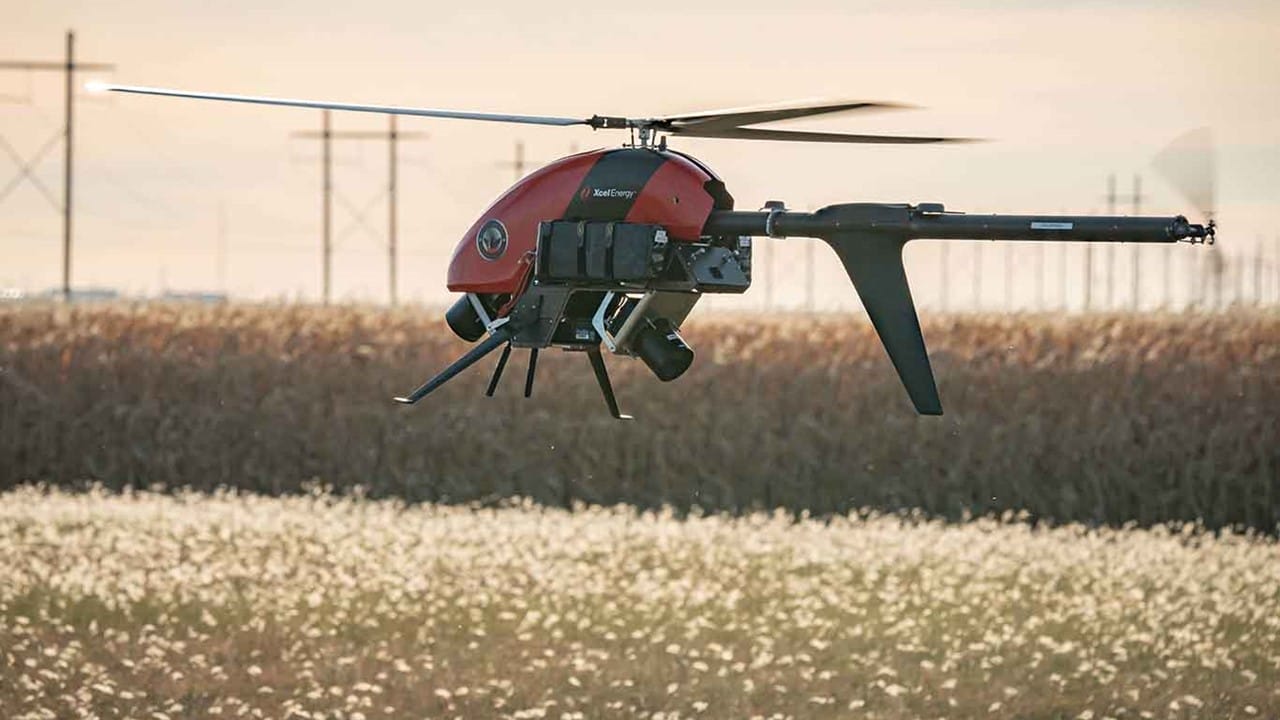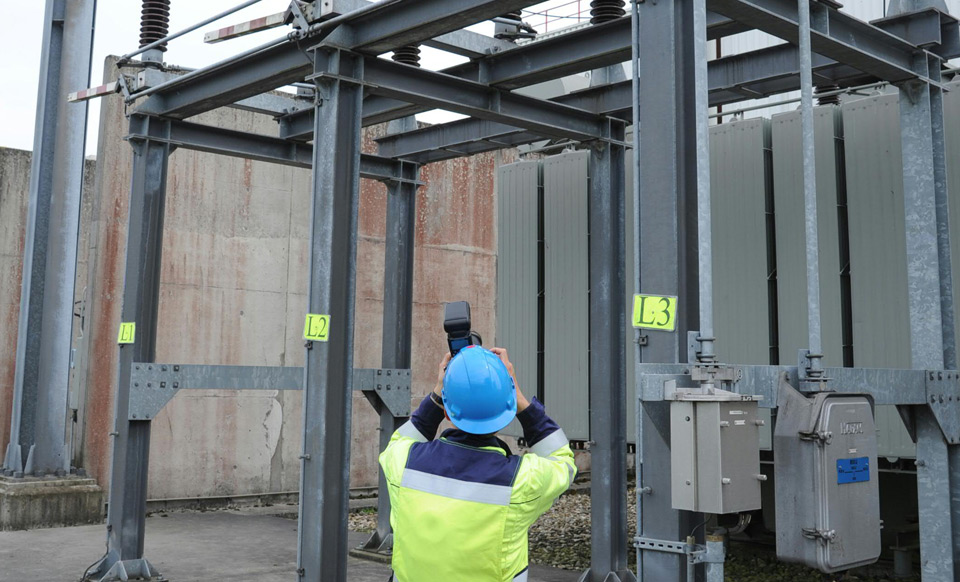The Electric Grid from Space to Sky — StormGeo Partners with eSmart Systems, HVL and European Space Agency
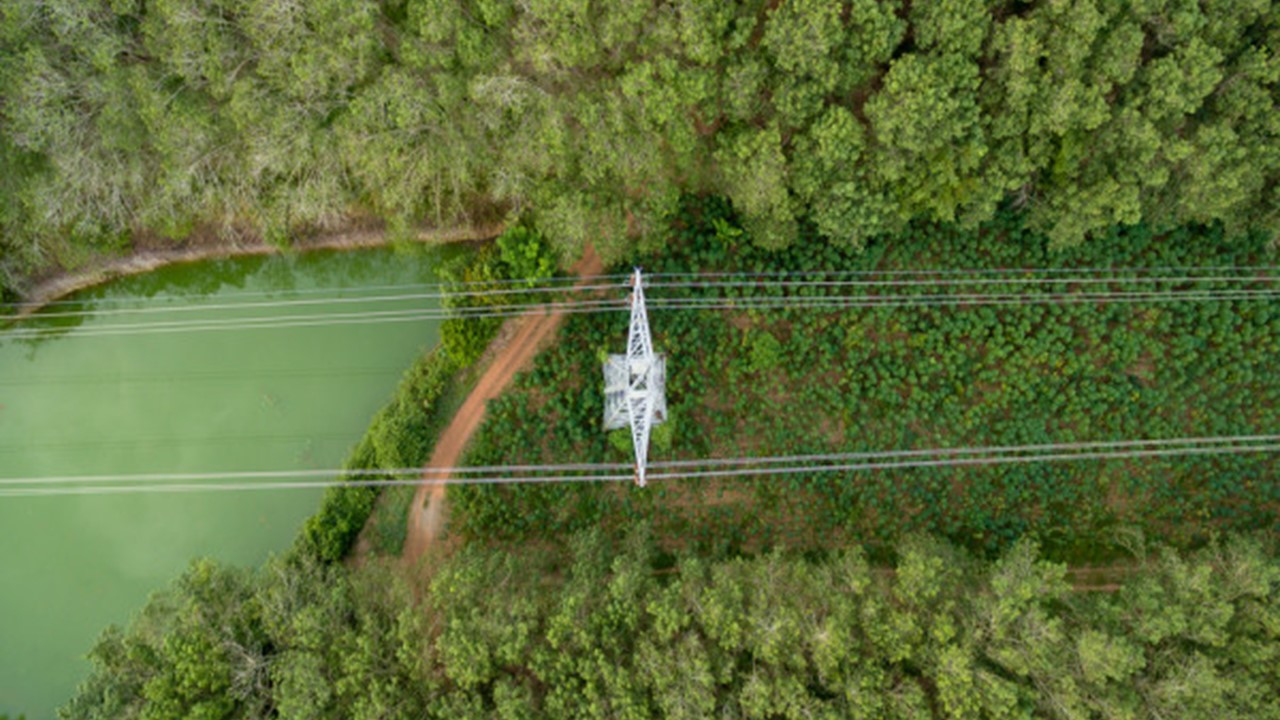
Originally posted on StormGeo.com
Oslo, Norway, December 12, 2019 — StormGeo, a leading provider in weather intelligence and decision support solutions, today announced a new project with ESA wherein StormGeo will assess the technical feasibility and commercial viability of satellite-based services in support of smart grids and electricity grid maintenance.
The proposed framework, known as GridEyeS, aims to give electric utilities and transmission companies more accurate risk assessments, faster outage management and better restoration strategies. The project team combines the expertise in satellite images and remote sensing from StormGeo, machine learning and drone imagery from eSmart Systems, and data science and power systems from HVL.
GridEyeS is one of the first projects of its kind to monitor the electricity network. Technical project lead, Professor Reza Arghandeh, discussed the challenges of the project, “Combining massive heterogeneous data sets from various sources of satellite sensors, drone images and weather observations and extracting intelligence out of it is a complex computational process. We will tackle this complex challenge with state-of-the-art machine learning algorithms that are able to capture spatiotemporal changes in datasets related to the electricity network infrastructure.” Prof. Arghandeh teaches Big Data and Machine Learning at Western Norway University of Applied Science (HVL) and is a Senior Data Scientist at StormGeo.
Using satellite images to analyze and predict the influence of vegetation on the risk level in power grids is a high-priority research axis, as vegetation is a main factor for grid disturbance. Furthermore, the potential for using satellite-based information is broad and could, for example, also be exploited for subsidence detections along power line trails
By connecting data across systems and companies, we are opening up a new world of streamlined operation planning and faster grid restoration,” said Jostein Mælan, COO of Weather Insights at StormGeo. “Given the team’s combined expertise in AI, software development, satellites, weather and power grids, we expect to push the boundaries to make our electricity grids more resilient.
The first stage of the project over Norway will be completed in 2020.
About StormGeo
StormGeo is a global provider of weather intelligence and decision support services, with leading solutions for shipping, oil and gas, renewable energy, utilities and aviation. StormGeo’s products and services help clients manage risk, optimize performance, reduce costs and increase revenue. The company has 24 offices in 15 countries, including six 24/7/365 global operations centers. As a participant in the UN Global Compact for Sustainable Ocean Business, our passion for weather and the protection of natural resources motivates us to support our clients in making informed, environmentally responsible business decisions. For more information, visit www.stormgeo.com.
About eSmart Systems
eSmart Systems AS is a Norwegian developer of next generation software solutions for inspections of powerlines, grid maintenance planning and energy flexibility optimization. Our mission is to create intelligent solutions to accelerate the transition to a sustainable future, by developing innovative technology to the energy market. The company is based on more than 20 years of international experience in establishing and operating knowledge based, leading IT and energy related companies targeting global markets. Key owners of the company are Kongsberg Digital, Energy Impact Partners, Equinor Venture, Nysnø, innogy Ventures and several Norwegian utilities. For more information, visit www.esmartsystems.com.
Next year, the big venture AI Week will take place for the first time. Over the course of three days in September 2020, the spotlight will be on artificial intelligence and the endless possibilities of technology. The initiators aim to create an unparalleled conference week in Norway’s AI epicenter, Halden.
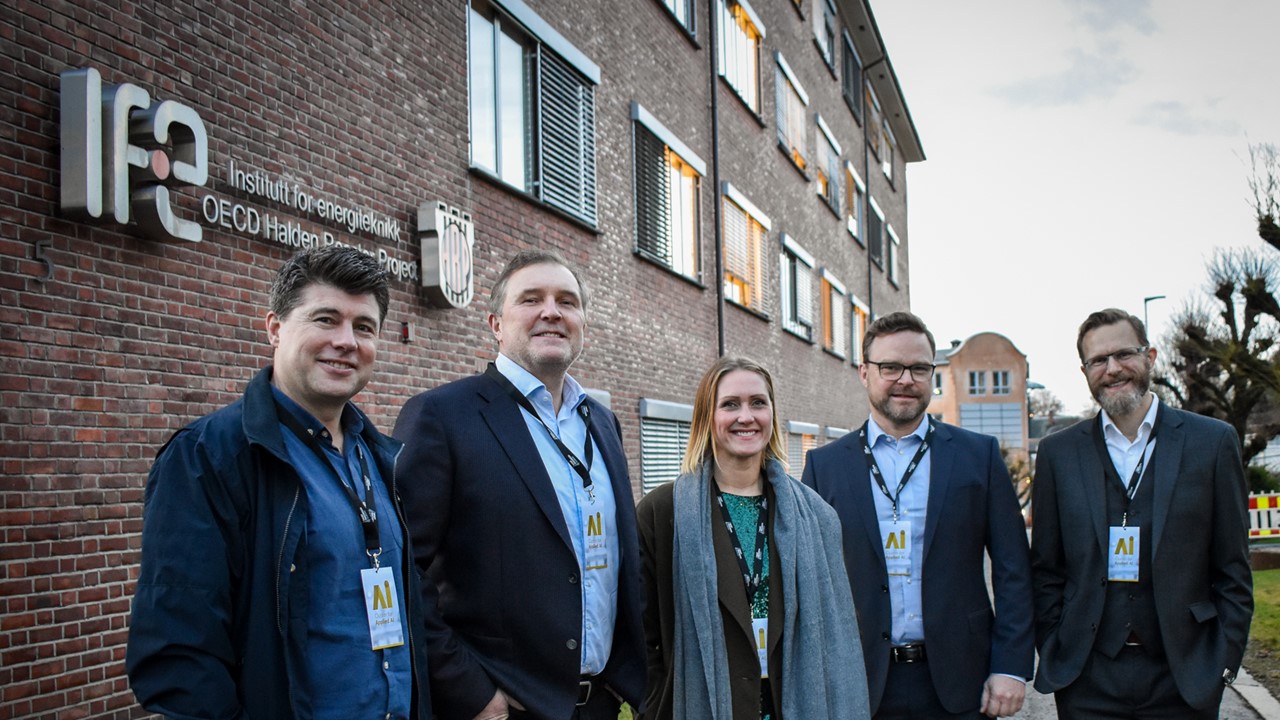
– AI Week is a collaborative project in which the Institute of Energy Technology (IFE), Halden municipality, eSmart Systems and Smart Innovation Norway want to showcase the unique environment within artificial intelligence in Halden and Norway. The competence environment within artificial intelligence in Halden dates back to the early 1980s, and has gained solid and broad international experience due to its extensive research and development in the field, says project manager for AI Week, Martine Bjørnstad.
The initiative started with a shared idea of organizing a conference that focuses on artificial intelligence (AI), however the idea has evolved, and it will now be a grand technology festival consisting of several different events with artificial intelligence being the running theme, and sustainability being the underlining theme.
– We wish to put our competent AI environment on the map, adds the initiators of AI Week.
Gathering a AI-national team
– This is an important part of our mutual goal of uniting a Norwegian AI-team. It provides us with a meeting ground for applied artificial intelligence where Norwegian players meet with international environments, arranged by several key organizations with long-standing experience in the field, comments one of the initiators and director of research at IFE, Dr. Tomas Nordlander.
The date is set to September 15-17 next year, and during these three days there will be activities for everyone, regardless of age and knowledge level on the topic.
– This should be something for the sharpest academic minds from India to Canada, and right down to kindergarten level. We will host a main conference in Brygga kultursal with prominent speakers, yet we also want to bring in elements such as coding for children and educational activities for the elderly, says Thor Mosaker, CEO of Smart Innovation Norway.
Intelligent technology put to use
AI Week´s ambition is to create an arena for both the Norwegian and international AI environment, while simultaneously showcasing the excellent AI expertise that lies in Halden and Norway.
– Not to mention, we want to showcase the practical use of this groundbreaking technology, says Knut H. H. Johansen, CEO of eSmart Systems.
Recently, a brand new cluster for applied artificial intelligence, called Cluster for Applied AI, was launched – and it is the initiators of this new cluster that are also behind the initiative of AI Week.
Significant event
In connection to AI Week, several parallel activities will be arranged in Halden, including an academic conference with the same theme; applied artificial intelligence, hosted by Østfold University College and IFE.
– We have a fantastic bunch of brilliant people from the tech world who are working to get the program in place these days. In addition, all the partners contribute with important skills that will make the event significant for anyone who wants to learn more about AI, says project manager Bjørnstad.
She hopes that the people of Halden will embrace the initiative, both in the form of participation and in showcasing the city itself, the country and the expertise that exists here.
– Without revealing too much, it will be a lot of exciting activities and events during these three days, both academically and of a cultural nature, concludes Bjørnstad and smiles.
For more information, contact:
Martine Bjørnstad, Project Manager AI Week
- Phone: +47 402 20 077
- Email: martine.bjornstad@smartinnovationnorway.com
Tomas Nordlander, IFE Research Director
- Phone: +47 988 24 892
- Email: tomas.nordlander@ife.no
Knut H. H. Johansen, CEO of eSmart Systems
- Phone: + 47 909 81 318
- Email: knut.johansen@esmartsystems.com
Jens-Petter Berget, Head of the Department of Social Development in Halden Municipality
- Phone: +47 402 21 454
- Email: jens-petter.berget@halden.kommune.no
Thor Mosaker, CEO of Smart Innovation Norway
- Phone: +47 934 35 163
- Email: thor.mosaker@smartinnovationnorway.com
Nhan Van Nguyen defended his PhD degree at the University of Tromsø (UiT), Department of Physics and Technology, on December 3rd 2019.

At eSmart Systems, Nhan Van Nguyen holds the position of Senior Data Scientist.
The title of his PhD thesis is: «Advancing Deep Learning for Automatic Autonomous Vision-based Power Line Inspection». After having successfully defended his PhD, Nhan was congratulated by the faculty, family and representatives from eSmart Systems.
Background
Nhan Van Nguyen has a B.Eng. degree in Computer Science and Engineering from the Ho Chi Minh City University of Technology, Vietnam, and a M.S. degree in Computer Science from Østfold University College, Norway. Nhan specializes in deep learning for computer vision.
Assessment Committee
The faculty appointed the following assessment committee:
- Associate Professor Atsuto Maki, Division of Robotics, Perception and Learning, KTH, Royal Institute of Technology, Sweden
- Professor Kjersti Engan, Department of Electrical Engineering and Computer Science, University of Stavanger, Norway
- Associate Professor Stian Normann Anfinsen, Department of Physics and Technology, UiT, Norway
The candidate’s main supervisor has been Professor Robert Jenssen (UiT). Chair of the defence was Professor Rune Graversen (UiT).
The trial lecture took place on December 3rd, 2019 at 10:15, and the public defence of the thesis took place later the same day, at 12:15.
Abstract
“Electricity is fundamental to the ability to function of almost all modern-day societies. To maintain the reliability, availability, and sustainability of electricity supply, electric utilities are usually required to perform visual inspections on their electrical grids regularly. These inspections have been typically carried out using a combination of airborne surveys via low- ying helicopters and eld surveys via foot patrol and tower climb. The primary purpose of these visual inspections is to plan for necessary repair or replacement works before any major damage that may lead to a power outage. These traditional inspection methods are not only slow and expensive but also potentially dangerous. In the past few years, numerous eorts have been made to automate these visual inspections. However, due to the high accuracy requirements of the task and its unique challenges, automatic vision-based inspection has not yet been widely adopted in this eld.
In this dissertation, we exploit recent advances in Deep Learning (DL), especially deep Convolutional Neural Networks (CNNs), and Unmanned Aerial Vehicle (UAV) technologies for facilitating automatic autonomous vision-based power line inspection. We propose a novel automatic autonomous vision-based power line inspection concept that uses UAV inspection as the main inspection method, optical images as the primary data source, and deep learning as the backbone of data analysis.
Next, we conduct an extensive literature review on automatic vision-based power line inspection. Based on that, we identify the possibilities and six main challenges of DL vision-based UAV inspection: (i) the lack of training data; (ii) class imbalance; (iii) the detection of small power line components and defects; (iv) the detection of power lines in cluttered backgrounds; (v) the detection of previously unseen power line components and defects; and (vi) the lack of metrics for evaluating inspection performance. We address the first three challenges by creating four medium-sized datasets for training component detection and classication models, by applying a series of eective data augmentation techniques to balance out the imbalanced classes, and by utilizing multistage component detection and classication based on Single Shot multibox Detector (SSD) and deep Residual Networks (ResNets) to detect small power line components and defects.
Then, we address the fourth challenge of DL vision-based UAV inspection, which is to detect power lines in cluttered backgrounds, by proposing LS-Net, a fast single-shot line-segment detector, for then to apply it to power line detection. The LS-Net is by design fully convolutional and consists of three modules: (i) a fully convolutional feature extractor; (ii) a classier; and (iii) a line segment regressor. With a customized version of the VGG-16 network as the backbone, the proposed LS-Net outperforms the existing state-of-the-art DL-based power line detection approaches by a considerable margin and can detect power lines in near real-time.
Finally, we propose few-shot learning as a potential solution to the fth challenge of DL vision-based UAV inspection, which is to detect previously unseen power line components and defects. To pave the way for addressing the challenge, we propose an innovative approach for advancing the state of the art of few-shot learning. Specically, we propose a novel dissimilarity measure in terms of the Squared root of the Euclidean distance and the Norm distance (SEN) combined to address the existing issues of the traditional Euclidean distance in high dimensional spaces. We extend the powerful Prototypical Network (PN) by replacing the Euclidean distance by our proposed SEN dissimilarity measure, which we refer to as SEN PN. With minimal modications, the SEN PN outperforms the original PN by a considerable margin and demonstrates good performance on the miniImageNet dataset with no additional parameters as well as almost no additional computational overhead. The sixth challenge, which is to address the lack of metrics for evaluating inspection performance, is left for future work.
The contribution of this dissertation is threefold:
First, it proposes a novel automatic autonomous vision-based power line inspection concept that uses UAV inspection as the main inspection method, optical images as the primary data source, and deep learning as the backbone of data analysis.
Second, it provides an overview of the possibilities and challenges of deep learning in automatic autonomous vision-based power line inspection.
Third, it proposes approaches for addressing the identied challenges, for advancing deep learning, and for paving the way for realizing fully automatic autonomous vision-based power line inspection.”
eSmart Systems recently launched a new Earth fault module in Connected Grid that is expected to significantly reduce inspection cost related to earth fault troubleshooting. The module enables earth fault monitoring at transformer and customer level which will bring great insight for determining where the earth fault has its origin.
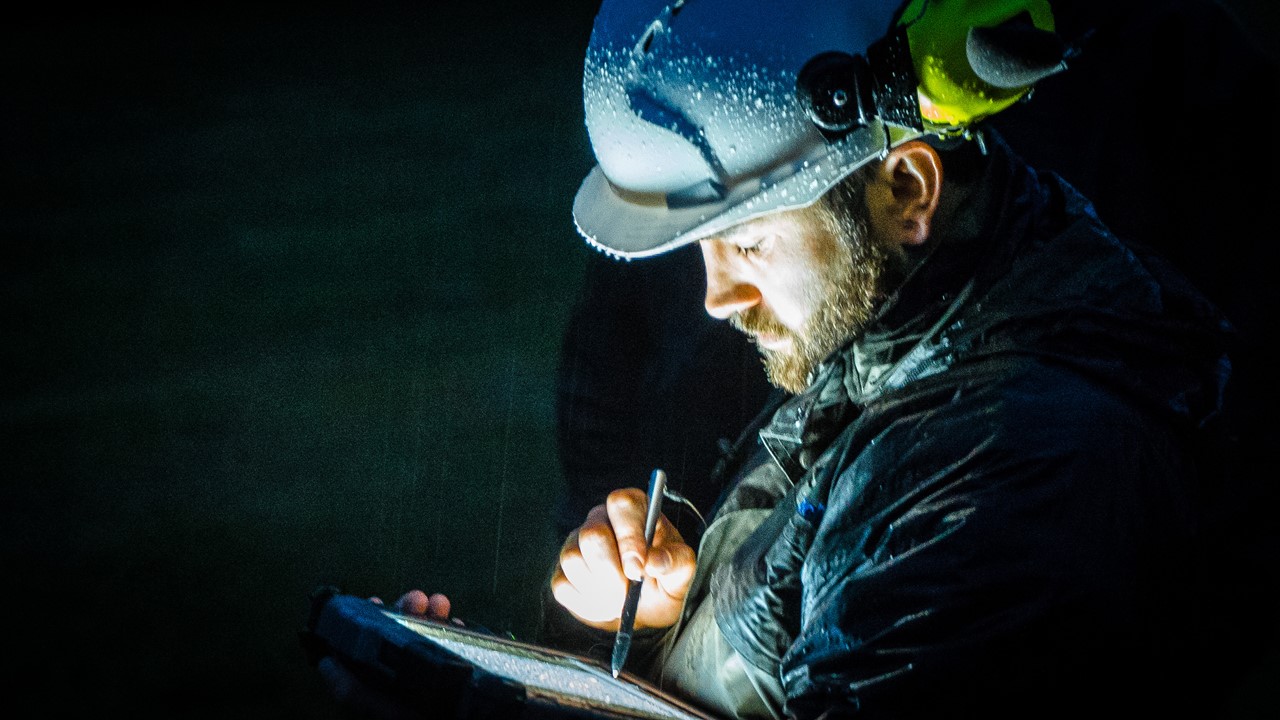
Earth fault is a phenomenon which means that an undesired current leakage goes from a conductor to earth or to other parts of an installation that should not be energized. As it is difficult to pinpoint where the cause of the earth fault lies, without onsite investigation, the fault location identification often lands on the grid company.
Identification of the origin is often difficult when it comes to earth faults. Connected Grid has functionality for real time, continuous visualization of earth faults in distribution networks. Functionality differentiates the earth faults based on their origin which is crucial for rapid rectification
eSmart´s Earth Fault module provides detailed information of the earth fault such as time of occurrence, duration, type of fault and size of the leakage current for further follow up.
I am excited for this release. Our solution not only reveals the origin of the earth fault, but along with advanced visualization, provides a fast and efficient troubleshooting process for the grid company
Focus on Earth Fault
Lie explains, the reason for focusing on earth faults is that the IT grid structure, can cause the earth faults to become a danger to life and property. Grid companies for example in Norway are responsible for earth faults occurring in the grid. If the error proves to be within the customer installation, the customer is liable to rectify the error.
An eSmart customer said that one earth fault troubleshooting normally requires 2 resources during one full day, which results in high inspection cost. By using the module in Connected Grid, they have estimated their savings to be up to 2 MNOK.
Wish to learn more about our newest solution?
eSmart Systems is one of 60 Microsoft customers and partners to be chosen to showcase a permanent exhibit at Microsoft’s new Industry Experience Center (IEC), which opened last month in Redmond, Washington.
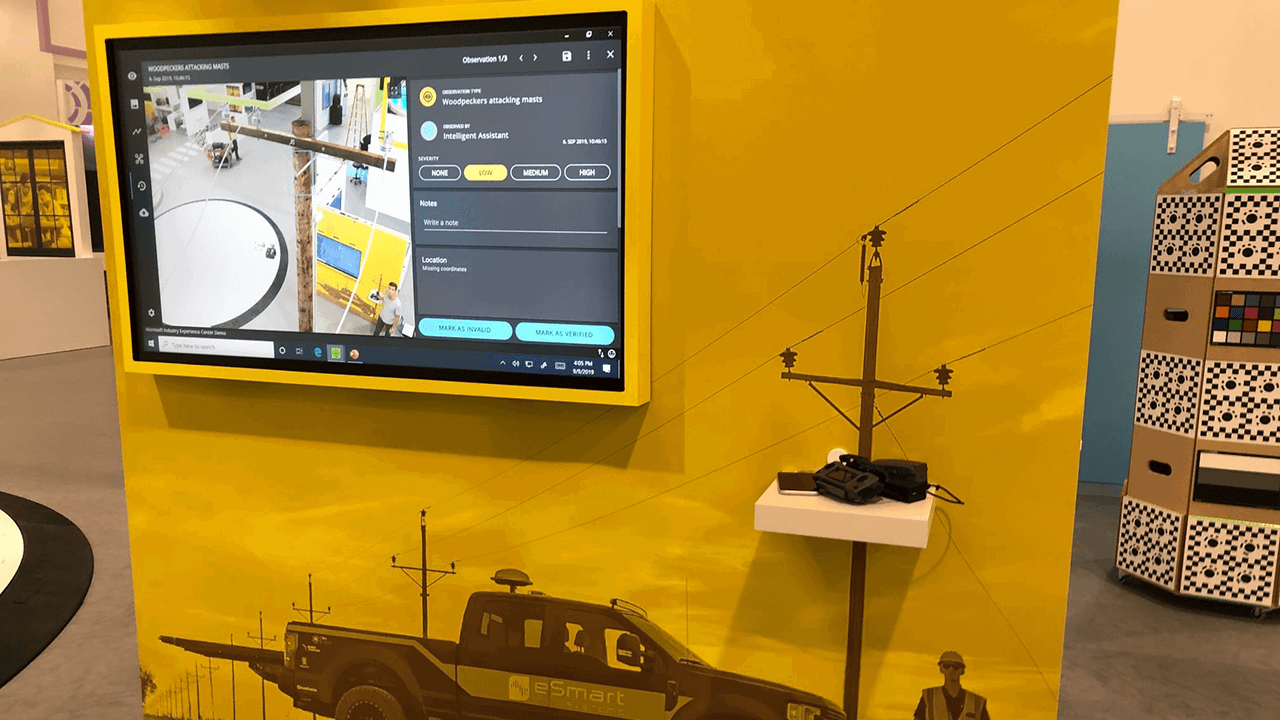
The 23,000-square-foot center showcases 60 fascinating, real-world examples of customers and partners that are innovating their businesses and disrupting markets with Microsoft technologies. Each interactive exhibit allows visitors to get a firsthand encounter with the technologies and explore how they are being used across industries to drive innovation. Deb Cupp, CVP of Worldwide Enterprise and Commercial Industries at Microsoft has stated the following about the exhibits at IEC.
These are immersive experiences that demonstrate how companies are digitally transforming, and how our customers and partners are using these solutions to drive disruption in their industries.
Read also: Microsoft’s new Industry Experience Center brings digital transformation to life
The Connected Drone experience
eSmart´s CVP International Markets, Knut Gustavsen, and Product Manager, Thomas Nergaard, were instrumental in securing and setting up the demo exhibition at IEC in Redmond. The Connected Drone exhibit is finally up and running after weeks of preparation. At this moment a drone can be found buzzing above in the center, illustrating how Machine Learning is allowing public utilities to detect problems with power poles without sending a technician out. Thus, helping them reduce maintenance costs and failure rates, in addition to ensuring the safety of their workers.
We have installed a utility pole and mounted a drone inside the building so that we can show visitors at the IEC how our Connected Drone software can analyze and present images in real-time. As the only Power & Utility vendor to be invited to have a demo, we are honored and thankful for this opportunity
A similar exhibit of Connected Drone is also included at the Microsoft Technology Center in Bjørvika, Oslo.
Steve Hambric assumes the position as President of North America operations for eSmart Systems US, Inc., effective October 28. Mr. Hambric will lead eSmart’s ambitious strategy and commitment for growth in North America. This strategy was launched after a June Investment of $34.4M by Innogy and Energy Impact Partners.
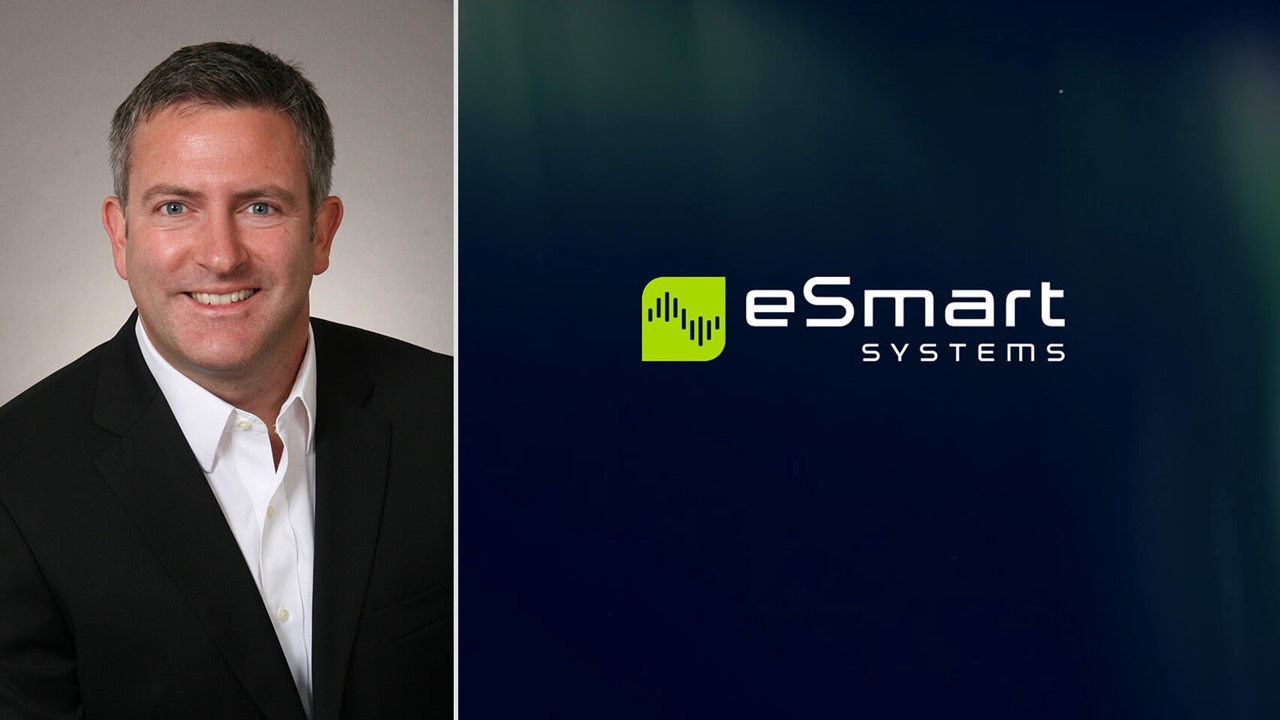
This is an exciting step in eSmart’s North America expansion. We believe that Steve has the right qualifications and experience to scale our U.S. organization and shape our solution strategy to create even more value for North American electric utilities and other energy delivery opportunities
Steve Hambric succeeds Knut Gustavsen, who will be taking on a new role within the company.
Steve Hambric has more than 20 years of professional experience in various leadership functions within the energy and utility industry. Most recently as a VP responsible for Itron’s portfolio of Consumer Energy Management solutions, owning their strategy, growth and P&L. Prior to Itron’s acquisition of Comverge, he was on the leadership team of Comverge and Instrumental in transforming their business. Prior to this, he was at Opower leading up to their IPO and sale to Oracle. Mr. Hambric has also consulted to energy and utility companies at Sapient and McKinsey & Company. See full bio.
He is a proven leader in the energy and utility space and is known for building strong teams and optimizing how solutions are developed, sold and delivered. He is eager to take on his new role at eSmart.
I am passionate about sustainability and have focused my career on helping utilities deliver energy that is more reliable, clean, affordable and safe. eSmart Systems leverages proven cutting-edge software to create value across all these categories. I believe in eSmart’s technology, the team and our ability to create meaningful societal value with electric utilities and other industries
About eSmart Systems
eSmart Systems AS is a developer of disruptive intelligent analytics targeting utility and energy markets. eSmart, which is headquartered in Halden, Norway, currently consists of almost 80 employees with offices in Norway, Denmark, the UK, and US. The company was founded in 2012 and has commercial revenues from large and established utilities and transmission & distribution grid operators. Key owners of the company are Kongsberg Digital, Energy Impact Partners, Equinor Ventures, Nysnø, innogy Ventures and several Norwegian utilities.
eSmart Systems US, Inc. is a subsidiary of eSmart Systems AS, and has its US headquarters in Bellevue, WA.
Read also: eSmart Systems secures USD 34 million investment for international expansion
DROPS Cycling Team announced this week that the Norwegian duo Emilie Moberg and Elise Marie Olsen will join the team for the 2020 season. eSmart Systems is a proud sponsor of cycling talent, Elise Marie Olsen (18).
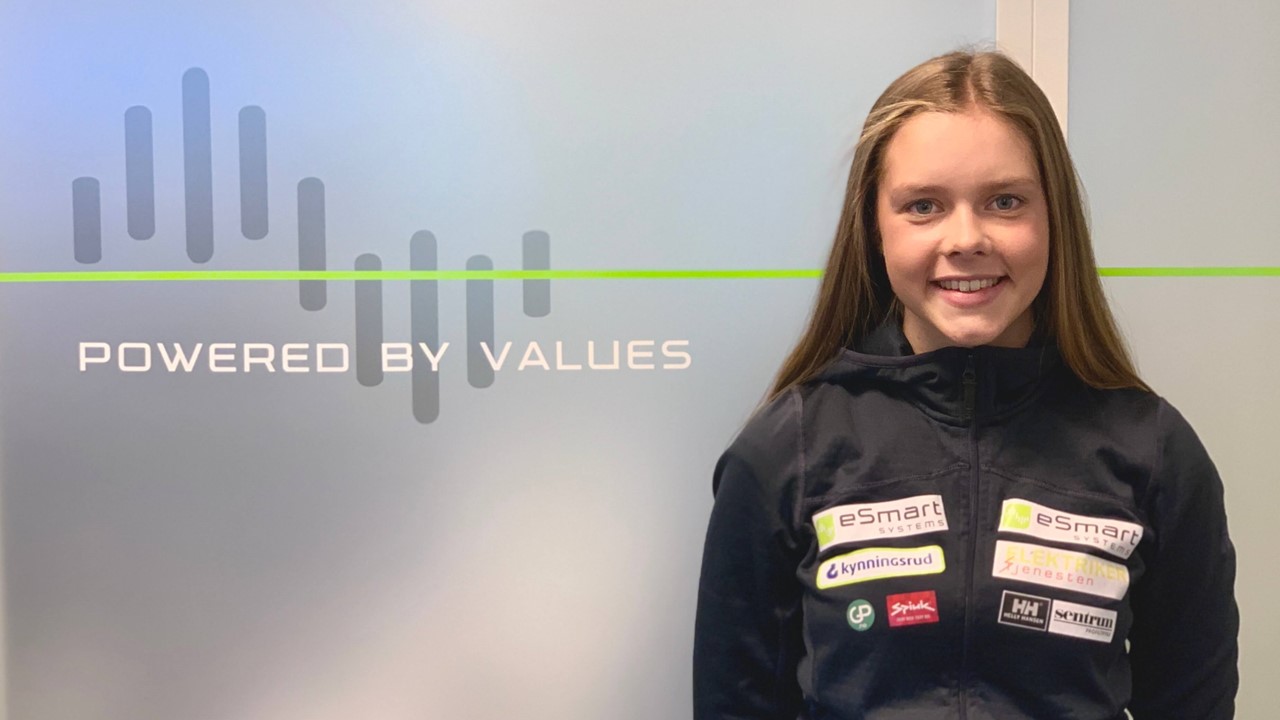
Elise recently represented Norway at the World Championships in Yorkshire where she rode well in support of teammate Silje Mathisen. 2020 will be Elise’s first year at senior level and she is the first rider announced who will form part of the team´s new U21 group of high potential riders as the team aims to reaffirm itself as one of the most successful development programmes for young talent in Europe. Earlier this season, Elise finished on the second step of the podium in two of Europe’s most prestigious junior races, the ITT stage in Jeugdtour of Assen and The Arctic Heroes of Tomorrow Race which runs alongside the Arctic Race of Norway men’s race.
As a company, we’re proud to support local talents such as Elise. This is truly a tremendous accomplishment. She is a great example of what hard work and dedication can achieve
The support I receive from eSmart Systems means a lot to me. Cycling is a quite expensive sport at this level, and I am really proud and grateful of your contribution. It gives me an even better opportunity to focus more on what makes me a better cyclist
DROPS
DROPS is a UCI Women’s Cycling Team based in the United Kingdom, founded in 2016. DROPS founding ethos remains to create a happy and supportive environment where riders can develop and reach their true potential, irrespective of age, experience or status. DROPS is widely acknowledged as one of the world’s most successful development programmes of the past three years.
I am really proud and delighted to get the opportunity to join DROPS, the team appears solid and serious. There aren´t many who get to sign with a pro cycling team this early, so this means a lot to me. It will hopefully allow me to participate in larger cycling races and gain valuable experience. I can’t imagine a better way for me moving from women junior to my first year in women elite. I must say it is almost a bit surreal that my first year as a senior will be together with my old neighbor and idol Emilie
The next chapter
Elise is possibly one of the first Norwegians who has signed with a foreign professional team as a first-year senior. She is ready and eager to start the next chapter of her cycling career with her new teammates
I am convinced that I will learn a lot this upcoming year, and I will do my very best to contribute to the team on and off the bike. I’m super motivated to train hard with high quality this winter, so that I can be best prepared when the 2020 season kicks off!
Assessing and mitigating risk from aging infrastructure, wildfire, and storm events are among the top objectives of T&D asset managers. Aging of the workforce and increased commitment to worker safety bring additional challenges and emphasis on how inspection data is collected, stored, and processed. With utilities looking for ways to inspect their infrastructure more efficiently, safely, and comprehensively, some have already adopted and others are considering aerial-based virtual inspections. Join our panel discussion and live Q&A with industry experts from EDM to hear how virtual inspections fit within existing maintenance and inspection processes.
Watch this webinar to:
- Learn what virtual inspections are.
- Discover how they fit into utilities’ current processes and how they can be scaled.
- Uncover virtual inspection pitfalls and benefits that can be achieved.
Other Webinars You May Like
-
 Webinars
WebinarsSign up to our webinar on AI and Machine Learning
In a webinar April 9, Chief Analytics Officer at eSmart Systems, Davide Roverso, will present how AI and deep neural network technology revolutionize traditional industriesApril 20th 2022 -
 Webinars
WebinarsWatch our webinar – How virtual inspections support capital projects
Watch our very engaging on-demand webinar with Xcel Energy on how AI plays a key role in the next generation of electrical infrastructure inspections.October 27th 2022 -
 Webinars
WebinarsWatch our webinar – Master your substation asset data: Expert insights and strategies revealed
Watch this webinar to learn how to improve poor quality and incomplete data for your substations and how you can achieve lower costs and a much faster response to faulty assets by relying on accurate, up-to-date data.May 09th 2023 -
 Webinars
WebinarsWatch our webinar – How AI & Virtual inspections changed operations at Xcel Energy
Inspecting transmission and distribution assets is tremendously time- and labor-intensive for utilities. Watch this webinar to learn the benefits and requirements of using a virtual inspection program and what AI is and isn’t capable of doing.May 12th 2023
Together with Smart Innovation Norway and IFE – Institute of Energy Technology, we are the initiators of a brand-new business cluster within applied AI to lift Norwegian companies into the future.

The environment in Halden has evolved to become a strong center of excellence in applied AI. To further strengthen it with an initiative with a national perspective, each member company will benefit, and help to develop the competitiveness of Norwegian business. We look forward to contributing actively
Much AI is currently being researched, and large nations such as the United States are far ahead. Smart Innovation Norway has always acted as a bridge between research and business and our mantra is “no impact, no research
It is therefore natural for us to aim for a business cluster for those who want to use artificial intelligence in practice
AI has come to stay
Mosaker explains that the new cluster will not only focus on artificial intelligence
in isolation, but will also include cyber security, business development, ethics and framework conditions, people and organization.
We want to have a cluster that looks at AI as practically as possible, where members can help each other get ready for the new era we’re entering – where AI is going to be an important part of our lives
he points out.
In order to achieve the cluster’s goal of making Norwegian companies sustainable and ready for a new world, which will largely be guided by artificial intelligence, the Halden-based research and innovation company Smart Innovation Norway has brought together key organizations from both private business and the public sector. and academia. Already, more than 40 different players have agreed to join the industry cluster.
All those who are in the cluster are companies that work with AI or have decided to work with AI
Mosaker says.
1 + 1 = 3
Among the initiators are Smart Innovation Norway, the software comet eSmart Systems and the research organization IFE (Institute of Energy Technology).
We have a strong competence environment within AI in Halden from before, with IFE, which has been providing AI solutions internationally since the 1980s, and Østfold University College, which has maintained its offer of pure machine learning studies while other colleges and universities may have skipped on other things
Mosaker points out.
The cluster has also been joined by heavy players such as Østfold Energi, Zacco and Statsbygg, as well as several start-up companies.
The global technology provider, Cyviz, supported the early cluster initiative, and has in turn contributed to the digitization and efficiency of Norwegian and foreign organizations for over 20 years with their innovative solutions in visualization, collaboration and simulation.
So we have a strong expertise at the bottom and when all these companies that want to work with applied AI come together, you get the opportunity to learn from the best. The idea with this cluster, as with other business clusters, is that when people come together, 1 plus 1 can quickly become 3
says Mosaker.
AI in both research and commercialized products
Mosaker highlights the unique AI environment that already exists in Halden as a key and important factor in the development of the new cluster. In addition to the aforementioned IFE and HiØ, which on a Norwegian scale have a very special history and tradition when it comes to AI, the technology company eSmart Systems in many ways represents the latest screams in the same field:
eSmart Systems has probably landed Norway’s largest AI investment from German and US investors of nearly half a billion. Thus, in Halden, we have both the expertise of heavy manufacturing in terms of production and we have a company that offers industrialized AI integrated into its software products through eSmart Systems. That combination makes the Halden environment in a very special position to further develop and share this knowledge nationally
Mosaker states
He believes the new business cluster will be important for Norwegian companies’ competence building and innovation in applied AI in the future.
Norway is far behind when it comes to investing in AI and we note on the positive reception that cooperation is needed in this area. We believe that we can get Norway to recover some of the neglected by good forces gathering and learning from each other, concludes Thor Mosaker (photo).
From then on, Smart Innovation Norway leads the industry cluster NCE Smart Energy Markets, with over 70 partners. Both clusters will live side by side in Smart Innovation Norway.
The R&D project Connected Drone 2 aims to increase asset insight and reduce the number of power outages. In June, the project completed the first out of a three-year project period.
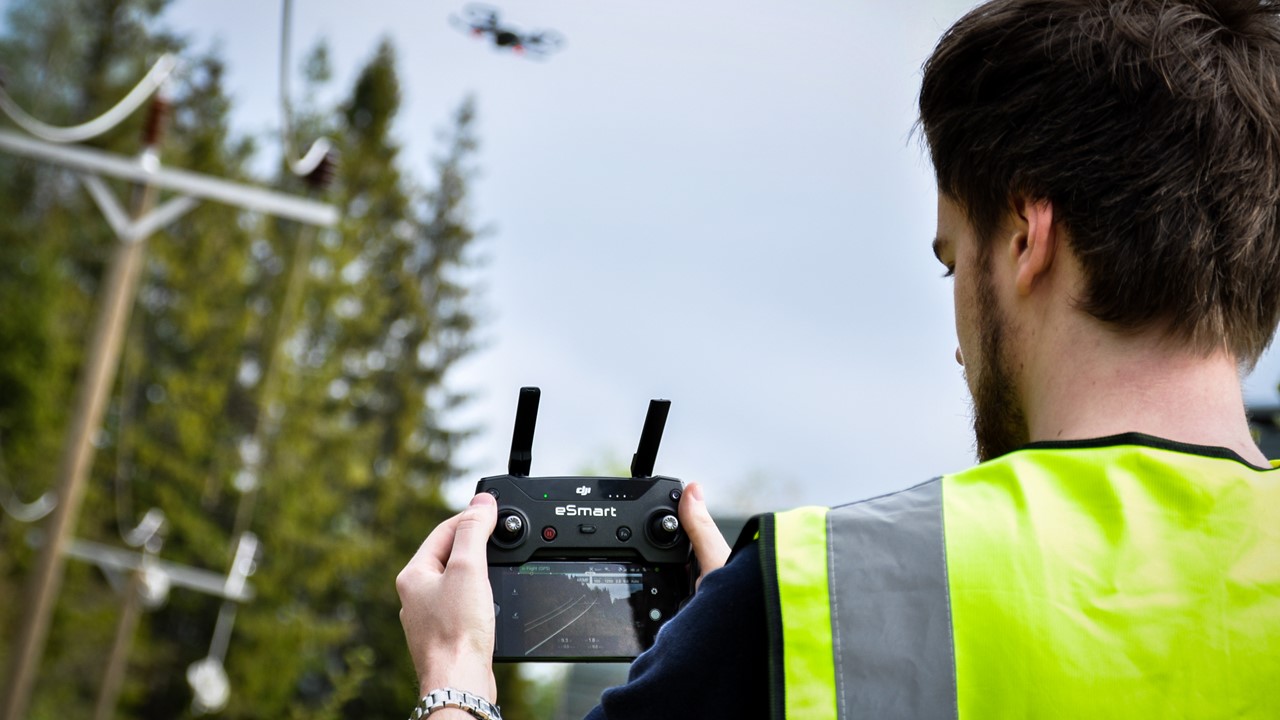
eSmart Systems’ Project Manager, Kathrin Sunde, is pleased with the progress so far.
Over the past few months we have been working with further development of the Connected Drone software and the two apps; Mobile Ground Station and Field Inspector. Our Analytics team has also been working on algorithms for autonomous navigation of drones along power lines and demonstration of “hardware in the loop” flights in our simulation environment. Now, we look forward to start the next phase.
Innovating power line inspections
Connected Drone 2 is a combined innovation and product development project, and the next phase is focused on automatic UAVs missions in a simulated environment, including development of deep learning algorithms which can recognize assets like power lines and pylons in real time. The project will also focus on further improvement of algorithms for component and defect detection in images as well as significant improvements in the Connected Drone software.
Connected Drone 2 counts 22 participating grid companies, of which Øvre Eiker Nett is the latest addition. Arne Hanto Moen, CEO of Øvre Eiker Nett is looking forward to getting started.
As a small power grid company, we want to use the most modern and best tools available. Connected Drone 2 will enable us to get a better overview and insight into our distribution network. In addition, we hope that involvement in this innovative project will give Øvre Eiker Nett positive ripple effects


